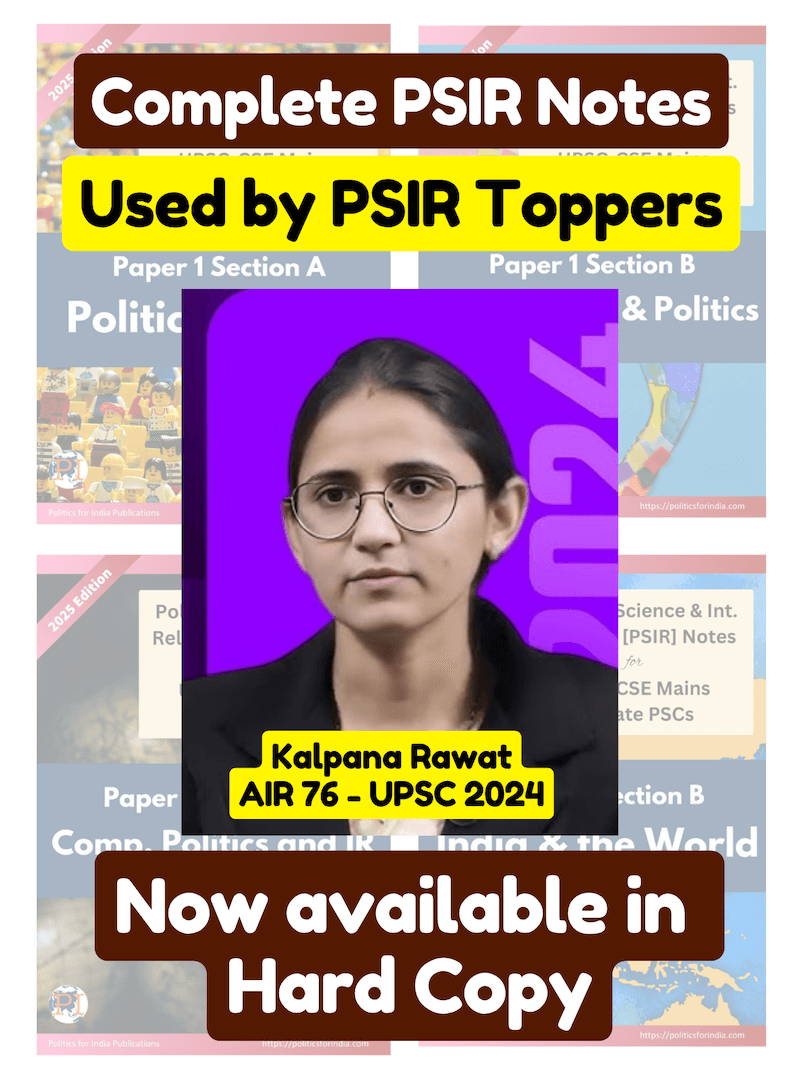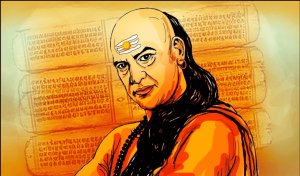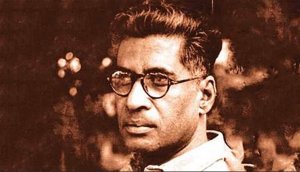1] Introduction
Ancient Indian political thought evolved within a spiritual ethos of Hinduism, intertwining governance with moral and religious principles. Many scholars have characterized Indian political culture as deeply informed by Dharma, suggesting that early Indian thinkers subordinated politics to spirituality.
For instance, the Indologist Max Müller argued that the Indian mind was almost wholly absorbed in religion and philosophy, leaving little room for independent political thought. This goes to suggest that the concern for the state or material progress was secondary in Indian Political thought. According to this view, ancient India lacked a secular political sphere.
However, unlike in medieval Europe, there was no protracted conflict between church and state in India. This integral political culture led to a duty-centric worldview, where obligations to uphold Dharma overshadowed any notion of individual rights.
Further, Indian scholars have challenged the notion that Indian thought was devoid of practical politics. Historians like B.R. Bhandarkar called it “absurd” to say India never developed political science, noting that texts like Kautilya’s Arthashastra demonstrate rigorous analysis of statecraft. The doctrine of Rajamandala (circle of states) in the Arthashastra anticipated a balance-of-power theory, predating almost all western literature on the subject.
In this topic, we try to examine Indian Political ideas through the major sources of ancient Indian political ideas – Vedic literature, the Epics (Ramayana and Mahabharata), the Dharmashastra law-books, and Niti texts – analysing how each addressed fundamental political questions.
2] Varnashrama
A] Modes of Nature (Gunas)
The Samkhya and Bhagavad Gita traditions suggest that the Nature is composed of three fundamental qualities or Gunas, known as the modes of nature. These modes are characteristics of individuals including animals, as well as of time, places, things, activities etc.
- Sattva-guan (mode of goodness) – The characteristics of sattvaguna are mind and sense control, tolerance, discrimination, truthfulness, mercy etc.
- Rajo-guna (mode of passion) – Material desire, great endeavour, false pride, rash eagerness to fight etc. are qualities of rajoguna.
- Tamo-guna (mode of ignorance) – Anger, hatred, hypocrisy, quarrel, lamentation, delusion, false expectations, fear and laziness constitute the major qualities of the mode of ignorance.
Based on above characteristics, persons, places, activities etc. can be classified to be belonging to different modes. For example, it is remarked that a residence in the forest is in the mode of goodness, residence in a town is in the mode of passion, residence in a gambling house displays the quality of ignorance. Similarly, foods in the mode of goodness increase the duration of life, and gives strength, health, happiness. Such nourishing foods are sweet, juicy, fattening and palatable. Foods that are too bitter, too sour, salty, pungent, dry and hot, are liked by people in the modes of passion. Such foods cause pain, distress, and disease. Food cooked more than three hours before being eaten, which is tasteless, stale, decomposed and unclean, is liked by people in the mode of ignorance. (BG 17.8-10)
B] Four Varnas (Chaturvarnya)
It is further suggested that every individual is made up of some combination of above varnas where one of mode of nature (guna) dominates. This dominance of a guna can be deciphered from the activities and the consciousness of a person e.g. the person with dominance of sattvaguna will behave differently than from a person with dominance of rajoguna or tamoguna.
Thus, based on one’s gunas (modes) and karma (activities) i.e. based on guna-karma, the society is classified into four Varnas.
- Brahmins – Teachers, priests, doctors etc. Associated with dominance of sattvaguna.
- Kshatriyas – Warriors and rulers. Showing the qualities of rajoguna.
- Vaishyas – Traders and agriculturists, connected with commerce and production. Showing mixed qualities of rajoguna and tamoguna.
- Shudras – Service providers to other three varnas. Dominated by tamoguna.
The term dvija-bandhu was also in practice, which meant those who are born in higher-class society—brāhmaṇa, kṣatriya, vaiśya—but they are not qualified because of their modes (gunas).
Thus, the concept of varna is based on disposition and conduct (gunakarma).
The concept of gunas serves as an excellent psychological framework, explaining diversity in human nature. It also offers a guide for self-cultivation by striving toward sattva and ultimately transcending all three for liberation (moksha).
C] Ashrama
The term ashrama refers to the four stages of life, outlining an individual’s ideal progression through personal and social responsibilities. These stages are:
- Brahmacharya (0-25 yrs) – the student stage, focused on learning and self-discipline.
- Grihastha (26-50 yrs) – the householder stage, involving marriage, family life, and economic duties.
- Vanaprastha (51-75 yrs) – the hermit stage, marking gradual withdrawal from material life.
- Sannyasa (76-100 yrs) – the renunciate stage, dedicated to spiritual liberation (moksha).
The Ashrama system provides a social roadmap for fulfilling duties at each phase of life. It emphasizes balance between worldly engagement and spiritual evolution.
D] Four Purusharthas (Goals of Human Life)
The term Purushartha (purusha+artha) means “purpose of a person” and refers to the four fundamental aims of human life in ancient Indian thought. These goals provide a balanced framework for personal, social, and spiritual fulfilment:
- Dharma – Righteousness and duty. Every individual should follow the duties prescribed for one’s varna and ashrama. Following one’s dharma sincerelyleads to attainment of next goal i.e. artha
- Artha – Material prosperity and security. It includes wealth, career, power etc. It should be pursued within the bounds of dharma (scriptural codes).
- Kama – Pleasure, desire, and fulfilment. It involves enjoyment of life through love, art, music, relationships etc. Again, it should be regulated by dharma.
- Moksha – It is suggested that after obtaining first three goals, a person will still pursue a higher goal. One should seek for liberation from the cycle of birth and death. It is the ultimate spiritual goal, achieved through detachment and realization of the self.
The Purusharthas are meant to be pursued in harmony, not in isolation. Together, they reflect a holistic vision of life, where worldly success and spiritual freedom are integrated rather than opposed.
3] Key Concepts
A] Dharma
Across these sources, certain key concepts underpinned Indian political thinking. Foremost is Dharma.
Often the word dharma is translated to mean religion, but this interpretation is not correct. In general usage, the word religion refers to a particular type of faith, the word dharma does not. At one level, Dharma indicates the characteristics, law of being of individuals. Just like liquidity is an intrinsic quality of water, and this quality cannot be changed. Similarly, there is dharma for the individual soul, that cannot be altered.
Further, Dharma also represents duty. This is more popular meaning of this word. According to Rig-Veda, Prithvim dharmam dhritam. Which means dharma is that which holds life on this earth. Each varna and ashrama had its own prescribed duties, which is called ‘dharma’ of that particular class. It is most important duty of the king is to ensure all varnas follow their dharma. It is for this reason; king has the rod of danda.
When we will not follow dharma, when different classes will not do their prescribed duties, it will lead to arajakata (anarchy), it will lead to pralaya (catastrophe). This theme is vividly illustrated in Mahabharata, a struggle between the forces of dharma and adharma.
Ancient Indians saw dharma as an eternal truth and the foundation of legitimate governance.
B] Rta
The word Ṛta denotes cosmic order.
The Vedas hold that behind the various forms in this world, there exists a law that governs them. In the solar activity, lunar activity, and the seasonal changes, there are well-defined principles. Similarly, there exists governing principles behind living beings. Every element has its own nature and assigned duty. Thus, the order present and observed in the universe is called as rta.
The concept is closely linked to the ideas of satya (truth), dharma (duty) and law of Karma.
C] Karma
Another anchoring in Vedic literature is that of Karma. The law of moral causation. The theory of Karma suggests that every action, good or bad, have consequences (in this life or future lives).
The law of karma and belief in rebirth are the foundation of morality in Vedic philosophy. It teaches rulers and commoners alike that just conduct would bring about social harmony and personal merit, whereas selfish or cruel actions would eventually lead to ruin. This cosmic law blurs the line between religion and politics – maintaining justice was not just pragmatically useful but also necessity for individual happiness. Injustice may give a temporary benefit, but will bring misery in long term.
As a result, ancient Indian political theory did not draw a sharp secular/religious divide;
4] State and Kingship
The Vedas, especially the Rigveda, provide the earliest glimpses of Indian political ideas. Vedic society composed of janās (clans) led by a chieftain or king (rājan). The Rigveda portrays the king primarily as a war-leader and protector of his people, often lauded in hymns for securing victory and cattle wealth.
However, the Vedic king’s powers were far from absolute – he governed in concert with assemblies known as the Sabha and Samiti, which included clan elders or nobles. These early assemblies suggest a germ of participatory governance: important decisions regarding war, peace, or ritual might be made collectively, and the king could be admonished or even replaced if he failed in his duties.
Notably, Aitareya Brahmana recounts how the gods themselves, elected Indra as their king for his qualities. This indicates that kingship was seen as a trust bestowed for ability and virtue, not sheer force.
The Vedic vision of the state’s purpose is thus to maintain Ṛta/Dharma – the order of truth and justice, as well as to protect the community. King has been declared as “the protector of men”. Vedic texts uphold that “moral upliftment of the people is the basis of the political institution”.
In Vedic polity, the best form of governance was a kind of limited monarchy. The king (rajan) was expected to be “janasya gopā” (protector of the people) and “dharma kṛt” (upholder of dharma).
He was not a law-maker in the modern sense; rather, he enforced customary law and sacred norms.
There was no notion of secularism – ritual and governance were inseparable. Indeed, “the king and priest had good relations and worked in mutual cooperation”, and conflicts between secular and religious powers (common in medieval Europe) had “no counterpart in ancient India”.
5] Ramayana
In the Ramayana’s political thought, Dharma is paramount: Rama is repeatedly upheld as “maryāda puruṣottama”, the supreme upholder of social and moral order. The epic emphasizes that the king’s first duty is to Dharma, even above personal interests or family ties as illustrated in Rama willingly accepting exile for 14 years to fulfil his father King Dasharatha’s promise, or making a painful decision to banish his own wife, Sita.
Both actions are portrayed as necessary to “maintain the moral order” or the legitimacy of the King. Rama sacrifices personal happiness to preserve the people’s trust in their ruler’s righteousness.
The Ramayana extols qualities of an ideal king: truthfulness, compassion, valour, restraint, and commitment to the welfare of the people. Rama listens to the petitions of even the poorest citizen; an anecdote tells how he disguised himself at night to learn the honest opinions of his subjects, reflecting an early notion of accountability to public opinion.
The state exists to curb the law of the jungle and guarantee righteousness. This aligns with the broader Indian theory that without a king, society falls into chaos (a theme also in Mahabharata and Manu).
Regarding the form of government, monarchy is taken as given, but it is tempered by the Brahminical guidance. Rama is a Kshatriya (warrior class) king, yet he humbles himself before sages and seeks their blessing. There is no advocacy of republics or alternative systems in Ramyana.
6] Mahabharata
The Mahabharata, written by Sri Vyasadeva, is an even grander epic that contains extensive discourse on politics, ethics, and social duty.
In the Shanti Parva of Mahabharat, after the war, King Yudhishthira visits Bhisma seeking guidance. Bhisma is lying on battlefield, on bed of arrows and instructs Yudhisthir on the subject of statecraft.
The famous Bhagavad Gita, a philosophical dialogue between Prince Arjuna and Lord Krishna is also part of Mahabharat.
The Gita emphasizes Svadharma (one’s own duty) and the imperative to act righteously without attachment to results. A ruler or warrior must fulfil his duty to uphold justice, even if it means personal sacrifice. Krishna advises the hesitant Arjuna that as a Kshatriya, “no greater good exists for you than a righteous war” when dharma is at stake.
A] Origin of State
A central contribution of the Mahabharata to political thought is its theorization of the origin of kingship and the state. In the Shanti Parva, the dying patriarch Bhishma instructs Yudhishthira (the new king) on how the institution of kingship was established. Bhishma describes initial Golden Age with no king and no crime. However, with decline in virtue, it led to state of nature characterized by mātsya-nyāya – “the law of the fishes,” i.e. the strong devouring the weak.
Horrified by anarchy, people appealed to lord Brahma for rescue. Brahma thereupon created the science of punishment (Dandaniti) to restore order. He then appointed Manu as the first king. Bhishma declares, “a state of anarchy is the worst” and thus the first duty of society is to install a king to prevent lawlessness.
The purpose of the state, per Bhishma’s teaching, is “the protection of righteousness (dharma) and avoidance of anarchy”.
B] Duties of King
The Shanti Parva systematically discusses the duties of a king (rajadharma) and the apparatus of government.
- Yudhishthira is instructed on how a king must be learned in the Vedas (for ethical guidance)
- King also must be skilled in Dandaniti (policy and penal law).
- A king must discipline himself before disciplining others – conquering his own senses, greed, and anger – idea that personal integrity is crucial for good leadership.
- A salient feature is the emphasis on “Rule of Law” – the king himself is subject to dharma.
- King shall protect his subjects and establish them in the observance of their respective duties
- king should follow dandaniti (science of punishment) to run smoothly affairs of state.
C] Forms of Governance
On the question of best form of governance, the Mahabharata also acknowledges different political systems like council-based governance of Panchalas. While monarchy is the dominant model presented (the epic’s heroes are all kings or princes), it suggests that as long as dharma is upheld and the people’s welfare ensured, the form can vary.
D] Law and Punishment
In Mahabharata Danda (the rod of punishment) is conceived as a divine force. “Chastisement governs all beings; it is the power that ensures all creatures do their duty,” says Bhishma. Without enforcement of law, society reverts to matsyanyaya (big fish devouring little fish). Hence the king must be ever vigilant in penalizing wrongdoers and protecting the vulnerable.
King should follow dandaniti, the science of coercion. As the reins check the steed or as an iron hook controls an elephant, so dandaniti keeps the world under restraints. Bhishma says, that if dandaniti is destroyed, the three Vedas will disappear and the duties of four varnas will mix-up. All people will suffer from many evils. It is the prime duty of the king to be fully versed in dandaniti. Danda protects the people and it awakes those who sleep; hence Dand is called Dharma.
On account of the fear of danda(punishment) the sinners do not indulge in sin, people do not kill others. If danda is not observed, everything will be enveloped by darkness. Bhishma explains the fundamental importance of the king’s office for justice and dandaniti. According to him people can live happily only if they live under the law. The Shanti parva accepts the importance of coercion, including judicial punishment. Capital punishment has also been justified for grievous offenders.
E] Diplomacy
The Mahabharata has rich material on diplomacy and foreign policy, often echoed later by Kautilya. Before the war, various strategies are discussed: negotiation (sama), incentives (dama), sowing dissension (bheda), and finally force (danda). Lord Krishna’s peace embassy to the Kauravas court exemplifies high-stakes diplomacy – he first exhausts all peaceful options, in line with the idea that war should be last resort in a dharmic framework.
F] Ethics and Politics
Once war is inevitable, the epic delves into just war conduct: rules such as not attacking an unarmed or disabled enemy, single combat between warriors of equal rank, no use of celestial weapons without due cause, etc.
Interestingly, the war shows ethical compromises from side of righteous Pandavas. It shows the ambiguous morality of politics – an acknowledgment that statecraft can force even virtuous individuals into morally grey areas (as when Yudhishthira lies about an elephant’s death to trick Drona, or Arjuna strikes Karna when he is weapon less, both at Krishna’s urging).
The epic thus does not shy away from critiquing the gap between ideal Dharma and political necessity. It introduces the notion of Apad-dharma – emergency ethics, where normal rules may be suspended to save the greater good. This concept later informs Kautilya’s Arthashastra (realpolitik under the cover of dharma).
7] Manusmriti
The Dharmashastras (treatises on sacred law), of which Manusmriti is the most renowned, represent the explicitly codified laws for human society. Manusmriti envisions society as an organic hierarchy of varnas and ashramas.
A] Origin of State
Like Mahabharata, Manusmriti also attributes origin of state to the gods. Manu declares that in the beginning, people were plagued by fear in the absence of a ruler (arājake hi loke’smin sarvato vidruto bhayāt |rakṣārthamasya sarvasya rājānamasṛjat prabhuḥ |)
Thus kingship is of divine origin in Manu’s account. The King (raja) is portrayed as God’s representative on earth, instituted to save people from the anarchy (matsya-nyaya). In practice, however, the king is advised to rule with the counsel of Brahmins and ministers, which will help him in upholding dharma.
B] Law and Punishment
Manusmruti states that Punishment (daṇḍa) is a manifestation of Dharma – “the Lord at first created Punishment, an incarnation of divine glory, to protect all beings”. This suggests that the righteous application of force to punish wrongdoers is a sacred duty of the king.
C] Equality Before Law?
However, the concept of equality before law was absent. Manusmriti prescribes punishment based on one’s varna. Brahmins (priestly class) were given lenient punishments compared to Shudras for the same offense. Brahmins were generally off-limits to capital punishment.
Brahmins were not expected to wield physical power or accumulate wealth. Instead, they were seen as spiritually elevated and intellectually refined, shaped by the sattva guna. Because of this, it was believed that a Brahmin would rarely commit a crime knowingly. And even if he did, social shame and loss of honour would be a greater punishment than physical penalty. Further, Brahmins were the guiding class of society. The logic was, if the teacher is disgraced or destroyed, the whole system collapses. Hence, the state had an interest in protecting their position and dignity, even if they erred.
Additionally, the dandaniti wasn’t based only on retribution. It also factored in the inner conscience of the offender. The assumption was that a Brahmin, being more aware of Dharma, would suffer greater internal remorse and social disgrace.
Therefore, the “lighter” legal penalty was offset by “heavier” moral burden.
In contrast, Shudras and lower castes were believed to be more influenced by tamas (ignorance/inertia), and so needed stronger external control, including physical punishment, to be deterred.
Criticism
This rationale of differing punishment has faced strong moral and legal criticism, especially in modern times. Dr. B.R. Ambedkar condemned such caste-based legal inequality, arguing it violated natural justice and human dignity. Modern law emphasizes equality before law, regardless of birth or social role.
D] Justice
Justice, in Manu’s view, was about each person observing their dharma. The king’s role was to be an impartial judge and enforcer.
E] Duties of King
Manu lays out the duties of the king in detail.
The king must be of Kshatriya lineage, physically robust.
King must be learned in the Vedas.
King must be trained in martial and administrative arts.
He should appoint wise ministers (ideally Brahmins or experienced counsellors) and heed their advice.
He should protect his subjects from external enemies and internal lawlessness.
King should maintain the social order and ensure that each person performs their assigned duties.
The Manusmriti explicitly advises the king to provide for the welfare of all four varnas.
It’s a paternalistic model of governance – the king as the patriarch of a social family.
Taxation is justified as the king’s share for performing this protective function (typically one-sixth of produce).
The king should not rule whimsically (“not according to his personal desire or gain”), but according to the established law and counsel.
F] Rights and Duties
Rights or freedoms are rarely mentioned in Manusmruti. Instead, righteousness and obligation are emphasized. For instance, rather than a concept of freedom of religion, Manu prescribes what rituals each varna / ashrama should perform. Instead of rights of citizens, he lists the duties of subjects: paying taxes honestly, following one’s occupation, and reporting crimes.
The underlying belief is that if everyone does their duty, the society will be in harmony and each person will receive their due protection and sustenance – a collective ideal of justice.
Also, absence of explicit mention of rights do not give a free hand to state. The duties of king, as mentioned above have been elaborately prescribed.
8] Scholarly Analysis
“The neglect of Indian political thought will result into the impoverishment of the west.” – Morris Jones
“Nowhere in the world, human mind has dealt with the various questions of life in such a depth as in case of India.” – Max Muller
It is not correct to say that Indians lack political thinking. When west describes India empty of political wisdom, it reflects their ethnocentric attitude. Similarly when west ignores Indian political thinking, it can be seen as the western attempt to maintain its cultural ideological hegemony.
A] Prof. V R Mehta
According to professor V R Mehta, the failure of west to recognize Indian thought can be because of the lack of understanding of Indian way of life by the people in the west. There is a big difference in the outlook of the west and east. West thinks in dichotomous lines. West has made difference between man and society, nature and culture, politics and ethics. On the other hand, Indians have always looked things in continuity. We have never separated man and society, nature and culture, dharma and danda (ethics and politics). Hence in order to understand Indian perspective on politics and statecraft, it is necessary to understand Indian way of life or the unique way of Indian thinking.
B] Bhikhu Parekh
According to Bhikhu Parekh, ancient Indian tradition can be categorized into two broad streams. Hindu tradition and Buddhist tradition. Indian tradition reflects continuity rather than change. Hence Hindu tradition and Buddhist tradition does not differ in any qualitative sense of the term. We can call Buddhism as ‘rebel child of Hinduism’. Hence there is lot of similarities between the two traditions. Buddhism also believes in the concept of Karma and rebirth like Hinduism. The basic difference between Buddhism and Hinduism is that Hinduism represents the hegemony of Brahmins and Kshatriyas. Buddhism represents the hegemony/alliance of Kshatriyas and Vaishyas.
Buddhism challenged the caste system thus more egalitarian in nature. However whether it is Buddhist text or Jain texts, Kings are supposed to be Kshatriyas.
Similarly two Hindu traditions, Dharmashashras and Dandashashras do not differ in a qualitative terms. It is a difference of degree rather than kind. Whether it is Dharmashashra or Dandashashras, both texts revolve around the two basic concepts. a) dharma and b) danda.
It is believed that Dharma cannot stand without Danda. In Dharmashashras, the central discussion is on dharma and the discussion on danda is peripheral. Whereas in Dandashashras, texts discuss danda as the main issue and discussion of dharma as peripheral.















